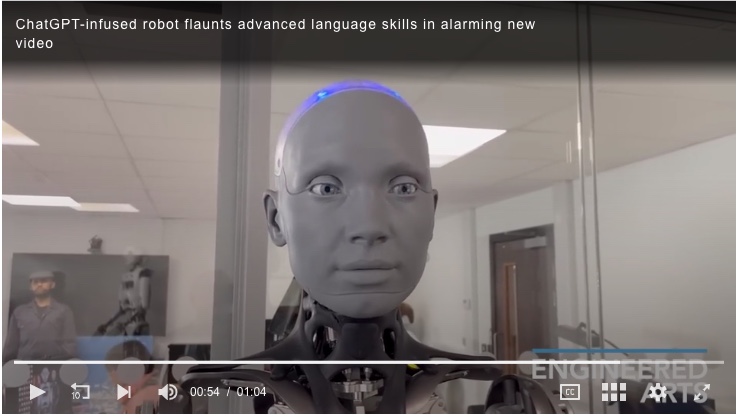Tip of the Week
Interpret This: A Dying Dialect Linked to Ancient Greek
On one hand, you’ve got the dominant languages of the world, which include English with 1.4 billion speakers, Mandarin with 1.3 billion speakers and Hindi with 602 million speakers. And then there is Romeyka.
Romeyka is an endangered form of Greek preserved in remote mountain villages of northern Turkey. Now spoken by only a few thousand people, it’s described by researchers as a bridge to the ancient world, sharing more with the language of Homer than with modern Greek. (Listen to a comparison in the video above.) With no written form, it has lingered on orally in an area around the Black Sea coast.
With Romeyka speakers aging, and younger people not exactly clamoring to learn the aged tongue, it’s another language in danger of disappearing from the world.
In this story from the Guardian, Endangered Greek dialect is ‘living bridge’ to ancient world, you can get a look at the current effort to preserve Romeyka. But the piece also includes this bit of perspective from University of Cambridge historical language professor Ioanna Sitaridou. “Obviously I love all languages and I would like to see them preserved,” she says. “But I’m not one of these people who think languages have to be preserved at all costs. And at the end of the day, it’s not exactly down to me. If the speakers decide to pass it on, great. If the speakers choose not to pass it on, it’s their choice.”
Your Portal: Is It a Barrier?
 Here’s another wrinkle in the attempt to communicate effectively with LEP patients: is your patient portal truly accessible? With growing use and dependence on web-based portals, are all patients getting an even shake?
Here’s another wrinkle in the attempt to communicate effectively with LEP patients: is your patient portal truly accessible? With growing use and dependence on web-based portals, are all patients getting an even shake?
According to Intersect: A Newsletter about Interpreting, Language and Culture, this is a communication sector that could use more examination. Last year about a third of immigrants reported “obstacles in receiving respectful communication from their providers.”
Among those obstacles: the patient portal that has become “the de facto channel for engaging patients in their care outside of facilities.” Use of these portals is less among Black and Hispanic patients compared to their white peers.
The Hidden Burden for Child Interpreters
 It’s not news to observe that children often end up serving as interpreters and translators for family members with limited command of English. But recently University of California researchers delved into a largely unexplored area regarding the complicated intersection of words, body language and facial expressions that children are being asked to simultaneously process and communicate to their elders.
It’s not news to observe that children often end up serving as interpreters and translators for family members with limited command of English. But recently University of California researchers delved into a largely unexplored area regarding the complicated intersection of words, body language and facial expressions that children are being asked to simultaneously process and communicate to their elders.
The result: kids are left to grapple with situations that they don’t expect, or dimly understand themselves. Observes UC researcher Sivenesi Subramoney, children are often proud of their role and responsibility, but “they aren’t nearly as prepared to interpret the unspoken. Emotion brokering catches them off guard and can lead to escalation, frustration or embarrassment.”
Read more about what Subramoney calls “emotion brokering” here.
Getting the Joke in ASL
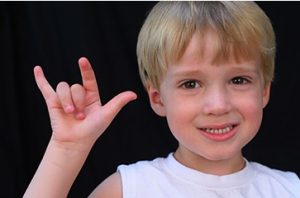 When Sam Corbin, the crosswords editor for the New York Times, took on the project of learning ASL, she couldn’t resist the temptation to do what she routinely did with spoken and written English: play around with words. Being something of a joker herself with a deep attraction to unleashing a pun, she became fascinated by how hand movements translate into humor.
When Sam Corbin, the crosswords editor for the New York Times, took on the project of learning ASL, she couldn’t resist the temptation to do what she routinely did with spoken and written English: play around with words. Being something of a joker herself with a deep attraction to unleashing a pun, she became fascinated by how hand movements translate into humor.
“Like hundreds of other signed languages spoken around the globe,” she writes, “ASL expresses meaning through a combination of hand shapes and movements, palm orientations, use of space around the body and nonmanual signals such as facial expressions and lip movements. While in English, a given word’s definition tends to dictate its usage, each of ASL’s meaning-making elements convey definitions. Some signs may begin as one word but transform into a question with a shift of the eyebrows — or, with a different hand movement, become a clever turn of phrase.”
Read the complete article: American Sign Language Reveals Wordplay Beyond Sound — In a visual language, a subtle hand movement can help you get the joke.
Newly Arrived: The Ecuadorians
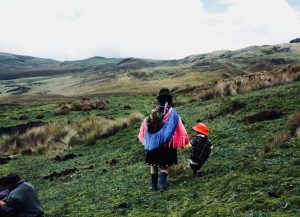 The excellent online news outlet, Sahan Journal, recently offered a deep look at Minnesota’s surging Ecuadorian immigrant population in this piece, Ecuadorians fleeing violence and economic distress seek a new start in Minnesota. While fewer than 200 Ecuadorian emigres arrived here in 2019, the number grew to nearly 2000 in a portion of 2024. It’s a 900 percent jump in just five years.
The excellent online news outlet, Sahan Journal, recently offered a deep look at Minnesota’s surging Ecuadorian immigrant population in this piece, Ecuadorians fleeing violence and economic distress seek a new start in Minnesota. While fewer than 200 Ecuadorian emigres arrived here in 2019, the number grew to nearly 2000 in a portion of 2024. It’s a 900 percent jump in just five years.
The Sahan Journal piece, as part of its ongoing census data reporting, examines the data and resources available to the newly arrived. It provides a look at conditions within Ecuador that drive people to traverse the dangerous Darien gap on their journey to escape violence and poverty at home. The story also hits positive notes of the efforts of Ecuadorians here to build businesses and support groups as they make the transition to a new life.
This is just another example of why it’s worth keeping a close eye on Sahan Journal for its perspective on immigrant life here, written from the point of view of those experiencing it.
(In case you thought the trip through the Darien gap as an interesting stroll, check out this documentary video that reveals it for a mud-clogged, gang-run shakedown operation for desperate people already living on the edge.)
AI and Language Services: A Take on the Future
 Like most everyone else involved in language service, you’re probably hearing footsteps from artificial intelligence interpretation and translation tools and wonder how they may alter your work. For a look at the current state of AI in translation, and related near-future issues, download this report, Current Usage, Sentiment,and Future Expectations of AI Among Language Service Providers and Remote Interpreters, from the firm boostlingo.
Like most everyone else involved in language service, you’re probably hearing footsteps from artificial intelligence interpretation and translation tools and wonder how they may alter your work. For a look at the current state of AI in translation, and related near-future issues, download this report, Current Usage, Sentiment,and Future Expectations of AI Among Language Service Providers and Remote Interpreters, from the firm boostlingo.
Among the pros of AI assistance noted in the report:
- quickly identify and provide new terms during live interpretation sessions
- clarify spoken content when clients/patients have heavy accents or use slang expressions
- search quickly for appropriate medical terms.
And a few of the cons:
- sometimes questionable accuracy
- the need for careful post-processing checks
- the learning curve can slow down productivity at first
- providers don’t trust it as a replacement and see AI use as complementary to human expertise.
The bottom line:
The blend of human expertise and AI capabilities can result in hybrid models where AI handles volume and speed, while humans ensure quality and cultural relevance… By positioning AI as a supportive tool rather than a replacement, the industry can harness its potential without sidelining human professionals.
For Non-Muslims: A Ramadan Etiquette Guide
 With Ramadan underway from now through April 9, this is the time to brush up on related good manners when interacting with Muslim co-workers and friends. Ramadan is the ninth month of the Islamic lunar calendar, during with which the faithful fast from sunrise to sunset.
With Ramadan underway from now through April 9, this is the time to brush up on related good manners when interacting with Muslim co-workers and friends. Ramadan is the ninth month of the Islamic lunar calendar, during with which the faithful fast from sunrise to sunset.
For a list of top ten tips on avoiding boorish behavior, see this CNN piece by , A Ramadan etiquette guide for non-Muslims.
“You don’t have to fast with us…,” Ahmed observes. “…but try not to schedule a work lunch.”
For a more personal and local look at the challenges and enriching aspects of Ramadan, check out this reprint from MinnPost by Ahmed Tharwat, Ramadan — a personal reflection.
The Fight to Preserve Threatened Languages
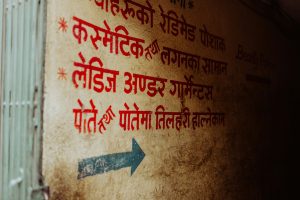 For an close look at the causes and effects of language diversity in an urban area, check out this new book, Language City: The Fight to Preserve Endangered Mother Tongues in New York, by Ross Perlin
For an close look at the causes and effects of language diversity in an urban area, check out this new book, Language City: The Fight to Preserve Endangered Mother Tongues in New York, by Ross Perlin
Perlin observes that up to half of the world’s 7,000 languages are likely to die over the next few centuries. But the book isn’t a sob-story for threatened languages so much as collection of case studies on how displaced people rebuild their lives in a place where half the residents speak a language other than English at home.
A New York Times Book Review has this to say about Language City; “Throughout Perlin never misses the chance to reinforce a key point: The history of New York’s lesser-known languages is also that of the traumas of many speakers. Some fled genocide (as in the cases of Western Armenian and Judeo-Greek), others mass deportation (languages of the North Caucuses), racial violence (Gullah, an English-based Creole) or starvation (Irish). Linguistic minorities “have been overrepresented in diaspora,” Perlin points out, because they are “hit hardest by conflict, catastrophe and privation and thus impelled to leave.”
The Gold Standard: Care in the Language of Patients Being Served
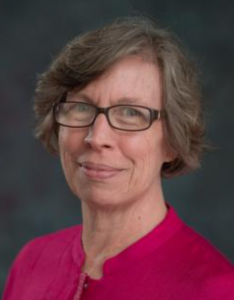 What’s the health impact when kids from minority or indigenous-language-speaking families get care that is not in their native tongue? According to Harvard Medical School researcher Ann Miller (right), there’s an 11 percent difference between them and native speakers in key early childhood development measures.
What’s the health impact when kids from minority or indigenous-language-speaking families get care that is not in their native tongue? According to Harvard Medical School researcher Ann Miller (right), there’s an 11 percent difference between them and native speakers in key early childhood development measures.
So what’s going on here? The trouble isn’t that speaking an Indigenous or minority language is the cause of developmental delays, Miller argues. The real reason is discrimination and lack of equitable access to health care and education for children and families in their home languages.
“The gold standard of health care, education, and child development services,” she says, “should be to deliver care in the language of the people you’re serving.”
Tune in to Immigrant Kids with Serious Medical Conditions
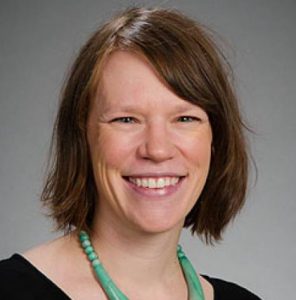 Find out more about how to better serve immigrant families that include children with significant medical conditions during this 11 am, Monday, February 26 webinar sponsored by Switchboard.
Find out more about how to better serve immigrant families that include children with significant medical conditions during this 11 am, Monday, February 26 webinar sponsored by Switchboard.
About 10–15 percent of refugee children have significant medical conditions, and their needs differ from those of adults. Presenters will address unique considerations for serving newcomer children, including
- the intersection of multiple medical diagnoses,
- supporting children’s families,
- and communicating across the migration continuum
Speakers include Elizabeth Dawson-Hahn, MD, MPH, an attending physician at Harborview Medical Center in Seattle, where she co-leads the Refugee Health Promotion Project, caring for medically complex refugee children shortly after arrival.
Register to learn more about significant medical conditions.
|
|
Tragedy Upon Tragedy: A Family’s Interpreter, Slain
 Peter Wang served in a familiar role for his Florida family. His parents, who had been smuggled into the United States from Fujian, a province in southern China, in the late 1990s, arrived without knowing English. They worked in restaurant jobs, managing eventually to buy a restaurant of their own. Despite several efforts to learn English, they eventually gave up.
Peter Wang served in a familiar role for his Florida family. His parents, who had been smuggled into the United States from Fujian, a province in southern China, in the late 1990s, arrived without knowing English. They worked in restaurant jobs, managing eventually to buy a restaurant of their own. Despite several efforts to learn English, they eventually gave up.
Their link to the larger world was their son, Peter, who translated school notes, doctor’s appointments, and all the other interactions that required a command of English. But that link was sundered when Peter was among the victims of the Stoneman Douglas high school shooting in Parkland, Florida.
For a sensitive and heart-breaking account of his family’s effort to contend with grief and reorganize the mundane details of life with little command of the language, see this New York Times piece, Lost at Parkland: ‘Peter Was Always My Translator’. It’s another, complicated look at the difficulties of contending with life in the United States with limited English ability.
Substance Abuse in Refugee, Immigrant Communities: Learn More
 Get the low-down on substance abuse issues in refugee and immigrant communities at the Tuesday, February 13 meeting of the Minnesota Immigrant and Refugee Health Network. Set for 9:30 to 11 am, this online and phone session will bring you information on resources and connections to help you prevent substance abuse, plus support those who are in need of intervention.
Get the low-down on substance abuse issues in refugee and immigrant communities at the Tuesday, February 13 meeting of the Minnesota Immigrant and Refugee Health Network. Set for 9:30 to 11 am, this online and phone session will bring you information on resources and connections to help you prevent substance abuse, plus support those who are in need of intervention.
Presenters from the Karen Chemical Dependency Program and Alliance Wellness Center will lead this interactive event. Bring updates and insights to share from your work in the field.
Register for the MIRHN meeting before the morning of the meeting. You’ll receive instructions on how to join the session online or by phone. Questions? Email cynthia.trevino@state.mn.us
Interpreters: Get YouTubed
Fall down a rabbit hole of videos on practice and training for medical interpreters at this YouTube channel, Interpret Your World. You’ll find dozens of short videos on subjects such as allergies, ashtma, chest pain, COPD and much more, plus interactive interpreting scenarios. Organizers promise you’ll “enhance your interpreting prowess by engaging with our exclusive YouTube channel tailored to cater to the needs of interpreters and translators across diverse levels and languages. Find out for yourself here.
For Refugee Community Outreach Workers: Safety Tips
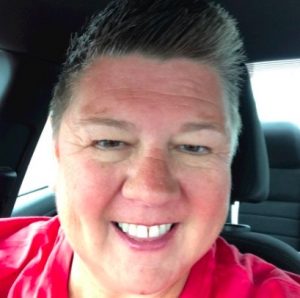
Dawn Higgins
The world of commotion that drives refugees from their homes sometimes spills over into their new home here, with distress and tensions that can have an impact on community sponsors, volunteers and resettlement office staff. Here’s a webinar on basic safety and situational awareness for those working in communities of newcomers.
Safety guidance will be offered by Church World Service Director for Security Dawn Higgins at this free January 29 session starting at 11 AM. Register here for the safety training.
Get Help Creating a Language Access Plan
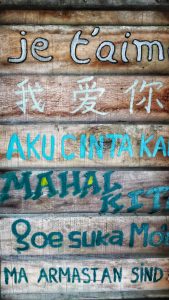 Time to update your organization’s language access plan to serve clients better, and to meet the dictates of state and federal law? Here’s help from Multilingual, which has drafted a concise summary — How to Create a Realistic Language Access Plan.
Time to update your organization’s language access plan to serve clients better, and to meet the dictates of state and federal law? Here’s help from Multilingual, which has drafted a concise summary — How to Create a Realistic Language Access Plan.
This combination podcast and web page lays out key facts about consumers’ legal rights, and what to consider when putting together a language access plan. It’s a quick look at the basic questions you should answer when considering how to serve limited English speakers more effectively.
A well thought out plan isn’t just a set of guidelines, the authors note. “It’s also a living testament to your dedication to serve all customers.”
A Surge in Afghan Refugees
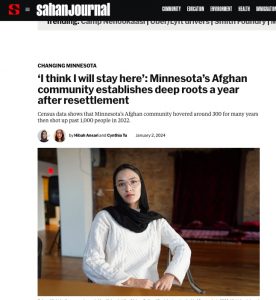 The excellent Sahan Journal reports a recent three-fold increase in Afghan refugees landing in Minnesota, and states that even that is an underestimate.
The excellent Sahan Journal reports a recent three-fold increase in Afghan refugees landing in Minnesota, and states that even that is an underestimate.
According to the Journal, “In 2018, 332 people in Minnesota reported being born in Afghanistan, a number that stayed fairly consistent for several years. But by 2022, that number jumped to 1,107 people.
“The Minnesota Department of Human Services reported that even more Afghans are living in Minnesota than the Census Bureau reports. More than 1,300 evacuees came to Minnesota between September 2021 and September 2022, according to the department.”
Not surprisingly, it’s a tough transition for refugees who have been ripped out of their communities halfway across the world. The Sahan Journal piece details the struggles of individuals and the programming offered by the Afghan Cultural Society. The story is well worth a look for organizations bracing for the next wave of arrivals.
Black Moms: We’re Ignored, Dismissed
 Another entry in the ledger regarding medical treatment of pregnant Black women, courtesy of the New York Times: How Unconscious Bias in Health Care Puts Pregnant Black Women at Higher Risk.
Another entry in the ledger regarding medical treatment of pregnant Black women, courtesy of the New York Times: How Unconscious Bias in Health Care Puts Pregnant Black Women at Higher Risk.
Black women say that too frequently medical providers do not listen when they describe symptoms, or dismiss their concerns. Reports the Times: “Studies validate their experiences: Analyses of taped conversations between physicians and patients have found that doctors dominate the conversation more with Black patients and don’t ask as many questions as they do of white patients. In medical notes, doctors are more likely to express skepticism about the symptoms Black patients report.”
Among the results for Black vs. white mothers are loss of more infants in the first year of life, higher rates of stillbirth and more pre-term births. Differences prevail even when the wealthiest Black women are compared to white women.
Read the complete piece for heart-breaking examples of what transpires when pregnant Black women are ignored, or their concerns get diminished, by white providers.
Posing a Potentially Awkward Question
 Sometimes it’s the little things that can mess you up. Case in point: sensitively asking where your recently-arrived immigrant patient is from or may recently have been. This information allows you to offer country-specific screenings for asymptomatic conditions that can cause health problems later. But depending on immigration status or other factors, it can be a delicate and potentially fraught conversation.
Sometimes it’s the little things that can mess you up. Case in point: sensitively asking where your recently-arrived immigrant patient is from or may recently have been. This information allows you to offer country-specific screenings for asymptomatic conditions that can cause health problems later. But depending on immigration status or other factors, it can be a delicate and potentially fraught conversation.
A guide sheet from Children’s Hospital of Philadelphia offers basic principles and a loose script on how to approach patients. Download the PDF, Ask Where: Communication Guidance for Clinicians Implementing Immigrant Child Health Screening in Primary Care here.
Child Interpreters: The Burden They Carry
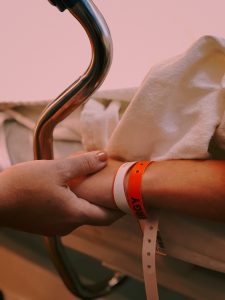 Should you ever think it’s okay to use a child as a medical interpreter for other family members, consider this essay on Multilingual by Onelia Navarro.
Should you ever think it’s okay to use a child as a medical interpreter for other family members, consider this essay on Multilingual by Onelia Navarro.
In it, Navarro recalls a pair of shocking incidents. In one, Navarro was called on to interpret for her parents that she was about to undergo cancer surgery that had a low survival rate. In another, Navarro’s mother picked her up from school to interpret a work meeting that she did not understand. Navarro found herself telling 15 Spanish-speaking workers that they were all about to be fired.
“I was usually praised for being a “mature and helpful” child,” Navarro recalls. “However, people did not realize how stressful this was for me. I was, by then, an 11-year-old kid, and I was constantly struggling due to uncertainty about my ability to deliver messages accurately in both languages. I had to grow up quickly to be able to understand adult life without getting the chance to process the difficult information I was being asked to interpret.”
Read the complete essay for the personal reflection and for a summary on when it might be permissible to use a child to interpret. The short answer to that: “Simply put, children must not be used to provide language assistance to LEP people with only one exception — a life-threatening emergency that requires language interpretation.”
The Disparities File: Unnecessary Amputations
 Here’s another addition to the horrifying-instances-of-medical-disparities file. In a recent New York Times opinion piece, My Patient Did Not Have to Die the Way She Did, Dr. Anahita Dua recounts the harrowing case of a Black female complaining of pain in her foot.
Here’s another addition to the horrifying-instances-of-medical-disparities file. In a recent New York Times opinion piece, My Patient Did Not Have to Die the Way She Did, Dr. Anahita Dua recounts the harrowing case of a Black female complaining of pain in her foot.
Dua, co-director of the Massachusetts General Hospital Peripheral Artery Disease Center, recognized the problem as peripheral artery disease. Earlier treatment might have prevented Dua’s remaining course of action: immediate amputation of the infected leg.
Amputation should be a last resort, Dua writes, if routine monitoring and lifestyle changes are part of a treatment plan. But good luck on that if you’re Black. “Black Americans with the disease are less likely to be offered treatment that can restore blood flow, known as limb salvage, compared with white patients,” Dua observes. “Black Americans also pay more for hospitalization costs and have a lower rate of successful limb salvage compared with white patients.”
Writing Systems of the World, Explained
Is it true that Korean is the most scientific writing system, as described by Asian scholar Edwin Reischauer? Get a feel for the various writing systems of the world in the YouTube video above.
The Roman alphabet gets stacked alongside other systems — abjabs, abugidas, syllabaries, and logo-syllabaries — of which most English readers are at best dimly aware. It’s another interesting look at the variety of approaches to the fundamentals of communication.
Race: Not a Predictor for Heart Attack, Stroke
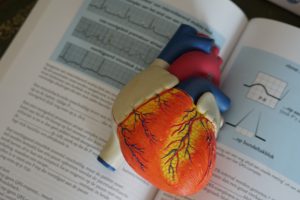 Does race help determine who’s most at risk for heart attack or stroke?
Does race help determine who’s most at risk for heart attack or stroke?
After years of including this factor in its risk assessment tools, the American Heart Association is yanking it from the equation.
In this New York Times story, Race Cannot Be Used to Predict Heart Disease, Scientists Say, Dr. Sadiya Khan observes, “We should not be using race to inform whether someone gets a treatment or doesn’t get a treatment.'” Kahn, a preventive cardiologist at Northwestern University Feinberg School of Medicine, chaired the statement writing committee for the American Heart Association.
This change in keeping with a broader trend in US healthcare that aims at removing race from a variety of clinical algorithms.
Free Covid Test Kits from Site in Multiple Languages
 Sad to say, it’s still handy to have Covid test kits around the house. Here’s a way for your limited English clients to order up a free batch in their first language.
Sad to say, it’s still handy to have Covid test kits around the house. Here’s a way for your limited English clients to order up a free batch in their first language.
Steer them toward this Minnesota Department of Health site, Say Yes! to Covid Test, accessible here. A drop down menu in the upper right corner offers translations in 37 languages plus English.
Rich Set of Resources for Afghan Refugees
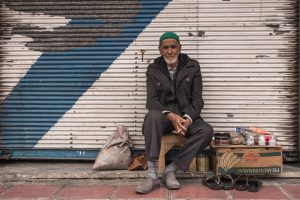 Hoping to understand and work more effectively with recent Afghan refugees? Take a look at this deep collection of respiratory illness-related information and resources available via the University of Minnesota’s National Resource Center for Refugees, Immigrants, and Migrants (NRC-RIM).
Hoping to understand and work more effectively with recent Afghan refugees? Take a look at this deep collection of respiratory illness-related information and resources available via the University of Minnesota’s National Resource Center for Refugees, Immigrants, and Migrants (NRC-RIM).
With more than 88,000 Afghani refugees settled in the US since the 2021 Taliban take-over of the country, NRC-RIM’s guide is a good starting point for improving your work with this new population. The online curated collection, available here, deals with topics including:
Get Covid Videos in ASL
Here’s a trove of colorful ASL videos from the Minnesota Department of Health. The numerous offerings include topics such as:
- Protect Your Child from Covid 19
- Vaccines and Kids
- What Teens Should Know
- What Are Breakthrough Cases?
- What Are Covid 19 Booster Shots”
- And much more
State of the Art: AI and Machine Translation
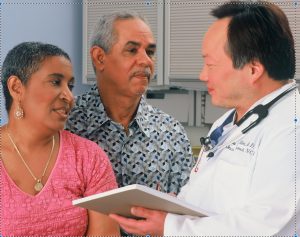
Wondering how artificial intelligence apps and machine translation will change the landscape for language access? Here’s a free webinar offered by Cross Cultural Communications, set for Wed., Nov. 8, 2023, 10:30 AM.
What Role do AI and MT have in Language Access? will explore AI and MT technologies related to language access in healthcare. Presenters will discuss how these technologies are addressed in Federal laws and regulations, as well as the potential pitfalls associated with their use. Current civil rights complaints, regulatory actions, and peer-reviewed research on language technology and access will underpin the presentation.
Participants will:
- understand the underlying Federal laws and regulations requiring language access,
- understand the uses and limitations of AI and MT,
- be able to articulate the value of human interpreters and translators.
The Pandemic: What MDH Learned about Cultural Communication
 What were the wins, challenges and lessons learned as the Minnesota Department of Public Health’s Refugee and International Health program grappled with the pandemic’s effect on refugee, immigrant and migrant (RIM) populations? Get an assessment at this webinar, Cultural Communications at MDH: Successes, Challenges and Lessons Learned, scheduled for 1-2:30 pm, Wednesday, October 25.
What were the wins, challenges and lessons learned as the Minnesota Department of Public Health’s Refugee and International Health program grappled with the pandemic’s effect on refugee, immigrant and migrant (RIM) populations? Get an assessment at this webinar, Cultural Communications at MDH: Successes, Challenges and Lessons Learned, scheduled for 1-2:30 pm, Wednesday, October 25.
Presenters will share promising practices about embedding cultural communication so public health agencies and other organizations can increase their ability to inform diverse communities and cultures.
By the end of the webinar participants working with RIM communities should be able to:
- define cultural communication.
- understand the principles of embedding cultural communication.
- apply strategies of embedding cultural communication.
Language Access: Learn the Law
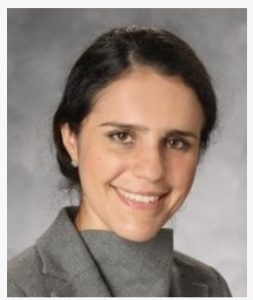 There’s still time to register for a free online training course that explores the laws that govern language access for limited English speakers, scheduled for this Wednesday, October 11, starting at 10 am. The webinar will outline providers’ legal obligations to provide translated and interpreted services, and outine how to respond when those laws are violated.
There’s still time to register for a free online training course that explores the laws that govern language access for limited English speakers, scheduled for this Wednesday, October 11, starting at 10 am. The webinar will outline providers’ legal obligations to provide translated and interpreted services, and outine how to respond when those laws are violated.
The session is offered by Blue Horizon, the online training platform for Cross-Cultural Communications, and will be led by Carol Velandia (right), a University of Maryland Graduate Professor, language access advocate and curriculum developer.
Learn How to Sharpen Online Communication
 Here”s a free class from Yale University that can help you use social and behavioral insights to create, implement and evaluate health communications online.
Here”s a free class from Yale University that can help you use social and behavioral insights to create, implement and evaluate health communications online.
Digital Media for Health Outcomes is designed as an evidence-based tutorial on the key steps to develop successful health campaigns on social media, and to evaluate their performance and impact on health behavior.
Instructors will explore best practices for building messages and campaigns. By the end of the course, you’ll be able to implement a digital communication strategy and evaluate its impact through ad metrics, survey data, cost, and coverage indicators.
Language Barriers Keep Hispanics from Care
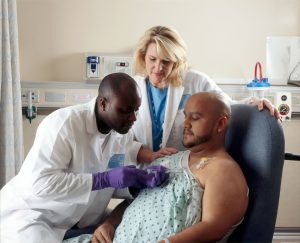 Good news on breaking down language barriers for Hispanic patients? No, not really, according to a survey funded by a supplemental medical insurance provider, Aflac.
Good news on breaking down language barriers for Hispanic patients? No, not really, according to a survey funded by a supplemental medical insurance provider, Aflac.
In the national 2023 study of Spanish-speaking patients, a third of the 2,001 employed adults surveyed said language is an obstacle in their path toward meeting medical needs and understanding insurance policies.
Some key findings include:
- Language Barrier Impact — Language barriers prevent 31% of Hispanics from accessing preventive care resources such as blood tests, pap smears, mammograms, STDs, skin cancer, and colonoscopies.
- Skipping Checkups — The study found that 25% of Hispanics skip regular checkups. Reasons cited include lack of insurance, uncovered costs, and labor disputes.
- Demanding Better Care — More than 60 percent of Hispanic respondents said that healthcare providers and organizations need to better engage and educate the Latino community on the benefits of being proactive with their health and wellness.
- Gender Dynamics — Hispanic men have a more positive outlook on their current and future health compared to women, especially on issues such as controlling their current weight/BMI (64% vs. 45%); financial health (57% vs. 44%); mental health (71% vs. 62%); and physical health (77% vs. 63%).
Seat at the Table: Serve on Equitable Health Care Task Force
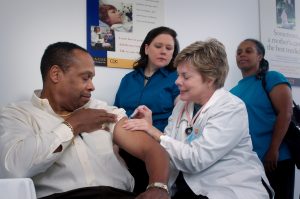 Here’s a chance to voice your opinions on health equity and optimal health outcomes — and in a way that’s more likely to result in change than simply mumbling around the water cooler.
Here’s a chance to voice your opinions on health equity and optimal health outcomes — and in a way that’s more likely to result in change than simply mumbling around the water cooler.
The Minnesota Department of Health is looking for members to sit on its legislatively-mandated Equitable Health Care Task Force. Members will examine race, religion, culture, sexual orientation, gender identity, age and disability as they search for ways to guarantee respectful and equitable care.
Want to apply for a seat? Go to Equitable Health Care Task Force or Board/Commission Equitable Health Care Task Force. Applicants must submit a cover letter; other materials such as resumes and letters of recommendation are optional.
Conference Goal: Make Health Education Material Relevant
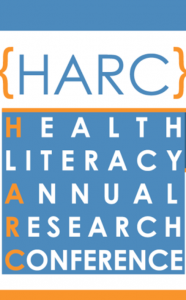 Translating health education materials is a step in the right direction. But if the material is difficult to understand in English, translation won’t make it better. Get insight on improving the usefulness of your communication at the virtual Health Literacy Annual Research Conference, hosted by Health Literacy Research and Practice and scheduled for October 30-31.
Translating health education materials is a step in the right direction. But if the material is difficult to understand in English, translation won’t make it better. Get insight on improving the usefulness of your communication at the virtual Health Literacy Annual Research Conference, hosted by Health Literacy Research and Practice and scheduled for October 30-31.
Keynote Addresses include:
- Making Numbers Meaningful for Patients and Clients, Jessica Ancker PhD, MPH, FACMI, Professor and Vice Chair for Educational Affairs, Department of Biomedical Informatics, Vanderbilt University Medical Center
- The Chatbot Told Me to Stop Taking My Medication – Health Literacy and Large Language Models, Tim Bickmore PhD, MSE, BSE, Professor, Khoury College of Computer Sciences, Northeastern University
<
This online conference includes more than 35 speakers in over two dozen sessions. Among them:
|
Human Interpreters: How threatened by AI?
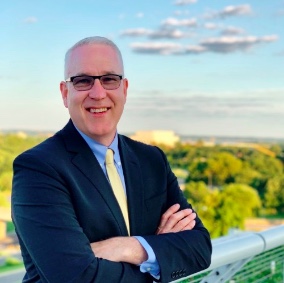 What’s does job security look like for interpreters in the face of recent advances in artificial intelligence? Get the low down from Middlebury Institute of International Studies associate professor Barry Olson, a conference interpreter with 25 years of experience. Olson is also the founder of Interpret America.
What’s does job security look like for interpreters in the face of recent advances in artificial intelligence? Get the low down from Middlebury Institute of International Studies associate professor Barry Olson, a conference interpreter with 25 years of experience. Olson is also the founder of Interpret America.
In his in-depth review, Olsen breaks this moment in time into three baskets:
- Technologies for the delivery of interpreting services
- Technologies that augment an interpreter’s performance
- Technologies designed to replace human interpreters‘ purpose altogether
There are situations in which good enough is good enough — where AI more or less gets the job done. But in medical, legal and diplomatic venues, uncorrected mistakes could be catastrophic. Hold on tight as the future of interpreting reveals itself.
Webinar Helps Put Communication in Cultural Context
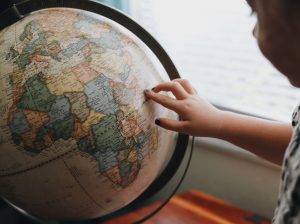 Getting the language right in health communication is one thing, but placing the words in a relevant cultural context is another. Get insight from industry experts on creating a culturally appropriate environment in a Public Health Communications Collaborative webinar, Noon – 1:30 pm, Thursday, September 21.
Getting the language right in health communication is one thing, but placing the words in a relevant cultural context is another. Get insight from industry experts on creating a culturally appropriate environment in a Public Health Communications Collaborative webinar, Noon – 1:30 pm, Thursday, September 21.
Panelists include:
- Erica Chung, MPH, COVID-19 Cultural Communications Specialist, Minnesota Department of Health
- Maria Griffin, Owner, Spo-ka’nay Enterprises
- Syreeta Wilkins, Communications Strategist, National Resource Center for Refugees, Immigrants, and Migrants (NRC-RIM)
Zoom registration available at Culturally Driven Strategies: Tailoring Health Communications to Build Understanding and Trust.
Medical Interpretation in the U.S.: Inadequate Approaches Harm Patients
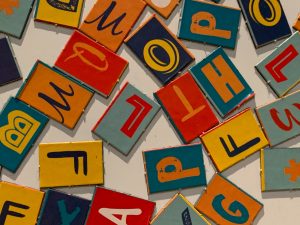 Here’s a dose of bad news from the Hastings Center on the failures of medical interpretation and the resulting harm to patients.
Here’s a dose of bad news from the Hastings Center on the failures of medical interpretation and the resulting harm to patients.
In this recent essay, Medical Interpretation in the U.S. is Inadequate and Harming Patients, a team of writers observe that there’s a shortage of in-person medical interpreters, which has led hospitals to turn to machine language tools such as Google Translate. You’re more likely to end up in the ballpark if the language in question is Spanish, but watch out if it is, for instance, Chinese. Studies that compare Spanish and Chinese interpretations found that errors are more common in Chinese and more likely to present life-threatening harm.
Throw in a lack of cultural competence training among staff interpreters, and the consequences can include delayed emergency care for children, an increase in errors and costs, and a decrease in care quality and patient satisfaction.
The Hastings Center report goes beyond the mere translation of words and digs deeper into the nuances of the medical exchange. “Expecting patients to adhere to Western constructs of health communication is unfair and unjust,” writers Riya Dahima, Melinda Luo and Vrushali Dhongade contend. “We must consider how linguistic differences and cultural values impact patients’ expectations and decision-making.”
Hazy Days, Health Risks: Info in Spanish, English
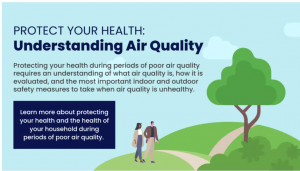 Those hazy days that result from distant fires raise an obvious question: what can I do to protect myself and my family both indoors and outdoors? Here’s information in Spanish and English that offers steps you and your patients can take, plus an explanation on what air quality is and how it is evaluated.
Those hazy days that result from distant fires raise an obvious question: what can I do to protect myself and my family both indoors and outdoors? Here’s information in Spanish and English that offers steps you and your patients can take, plus an explanation on what air quality is and how it is evaluated.
Download this resource from the Public Health Communications Collaborative here.
Stress and Self-Care: Get Tips on How to Cope

Are you or your co-workers worn down by the stress of trying to meet the needs of immigrant and refugee communities? Here’s information that can help, to be offered by the Metro Immigrant and Refugee Health Network in a WebEx meeting scheduled for Tues., Aug. 8, 9:30-11 am.
The program, Self-Care for Professionals Working with Immigrant and Refugee Communities, will be presented by Dr. Christine Danner, Director of Behavioral Health at MHealth Fairview Clinic Bethesda.
Also included in the program is an overview of the voter registration process.
Register here by Aug. 7. After you register, you will receive an email with instructions for joining the meeting online or by phone. Direct questions to cynthia.trevino@state.
Webinar Tackles Traumatic Stress in Refugee Kids
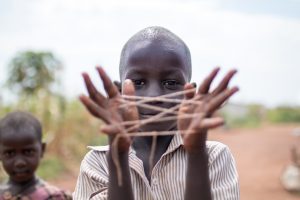 Among the challenges for refugee youth: overcoming stress resulting from migration and resettlement. At worst they can be subject to abuse, exploitation and trafficking, but also routinely suffer from limited access to resources and the dislocation of existing as a stranger in a strange land.
Among the challenges for refugee youth: overcoming stress resulting from migration and resettlement. At worst they can be subject to abuse, exploitation and trafficking, but also routinely suffer from limited access to resources and the dislocation of existing as a stranger in a strange land.
This free webinar, set for Tuesday, August 1, 12 p.m., will help you define and identify abuse, exploitation and trafficking and offer you strategies for responding. Training is intended for caseworkers, healthcare and mental health professionals, teachers, and anyone else serving children and youth.
Register here: Traumatic Stress Among Refugee Children
Interpreters: Only the Lonely?
 What is a problem all too common for medical interpreters? When Kelly Henriquez asked that question at a panel on interpreter self-care at a national conference, the answer she got was, Loneliness.
What is a problem all too common for medical interpreters? When Kelly Henriquez asked that question at a panel on interpreter self-care at a national conference, the answer she got was, Loneliness.
Henriquez, a dual-certified Spanish medical/healthcare interpreter working in Virginia, noted these trends:
- Many interpreters don’t know where to turn for help.
- Fourteen percent reported they never got training on how to address their mental health needs.
- In-person interpreters were more likely to get an emotional boost from their work.
- Remote workers were more likely to report a decline in mental health.
- Certification such as that offered by the National Board of Certification for Medical Interpreters was a predictor of how many tools interpreters had to fight feelings of isolation and loneliness.
For more detail, and for self-care tips, find Henriquez’s blog post on the subject here.
Taking It to the Next Level: Simultaneous Interpretation
It’s one thing to interpret with pauses allowed in the exchange between speakers. But as this amusing and instructive video explains, simultaneous interpretation is a more daunting and sophisticated task that requires years of preparation.
The instance depicted by the video throws an especially hard curve, in that the interpreted conversation is between earthlings and an alien. Probably not a situation you’ll encounter in your professional role, but well worth a look to expand your knowledge of the interpreter’s job.
The Art Behind Translation
 Usually we’re here concerned with the utilitarian aspects of translation. How does a Hmong patient, for example, best learn more about foot care with diabetes, post-op care or child immunization schedules?
Usually we’re here concerned with the utilitarian aspects of translation. How does a Hmong patient, for example, best learn more about foot care with diabetes, post-op care or child immunization schedules?
This week let’s take a step off the path and consider the artistic aspects of the translator’s job. In this New York Times piece, “Building Something Together’: Translators Discuss Their Art,” five translators describe the joys and frustrations of turning literature from other languages into English.
Literary translators have often gone unrecognized, and the profession has never been much of a route to wealth. Yet, as the Times observes, “The act of carrying a work from one language to another — an art as much as a craft — is anything but mechanical: Translators’ choices are informed by their sensibilities, their emotional landscape, their background.”
AI vs. Human Interpreters: Who Wins?
Take a look at this video that compares the efforts of two human interpreters against interpretation provided by the AI app, Kudo. The results? Less weighted against AI than you might think.
The human interpreters found some of the language employed by their AI counterpart “borderline nonsensical,” and observed that pauses in speech confused the interpretation app. But in cases where the speaker was throwing out a torrent of words, AI did better, they allowed. “I was taken aback,” said one, that the app conveyed all of the content.
These, of course, are the early days of this technology. At the moment, neither of the humans felt it was ready for situations where a lot is at stake — such as negotiations among nations, courtrooms and medical environments. But to watch the video is also to realize that big changes are right around the corner.
When the Translator Is a Child
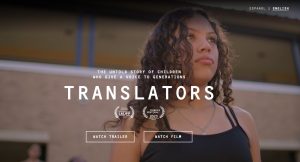 Navigating the medical, governmental and business structures of the US is a routine challenge for college-educated native English speakers. Now imagine attempting the same as a recent immigrant. And now take it a step further: you’re a child in an immigrant household, but you’re the most proficient English. You have now become the family translator, with all the perils and responsibilities that come with the role.
Navigating the medical, governmental and business structures of the US is a routine challenge for college-educated native English speakers. Now imagine attempting the same as a recent immigrant. And now take it a step further: you’re a child in an immigrant household, but you’re the most proficient English. You have now become the family translator, with all the perils and responsibilities that come with the role.
This 20-minute film, Translators, is a deeply moving view of these fraught situations. The children and families depicted struggle to do the best they can, but the many difficulties come leaping off the screen. The film presents tough, complicated encounters, but leaves the judgments up to you. It’s well worth your time.
Get Help Treating Trauma in Refugee Kids
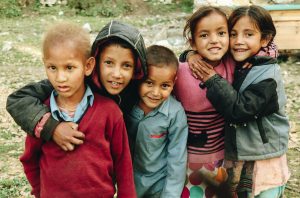 Get a handle on understanding the effect of traumatic stress on children who have been displaced and relocated by force in this free webinar, Traumatic Stress Among Refugee Children and Youth, set for noon to 1:30 pm, Wednesday, June 21.
Get a handle on understanding the effect of traumatic stress on children who have been displaced and relocated by force in this free webinar, Traumatic Stress Among Refugee Children and Youth, set for noon to 1:30 pm, Wednesday, June 21.
Presented by Switchboard, the US hub for resettlement service providers, the three-part webinar will explore how stress can disrupt the daily lives of children, complicate their adjustment to their new home, and interfere with their ability to make friends with other kids.
These webinars are intended for direct service staff, including case workers, medical case workers, mental health professionals, educators, and other child- and youth-serving professionals who work with newcomer children and families.
- Describe traumatic stress, resilience, and attachment in refugee children
- Identify common trauma-related reactions and behaviors in children of different ages and developmental stages
- Summarize key approaches to support refugee children and help them to thrive in their new homes
To register, visit Traumatic Stress Among Refugee Children and Youth Webinar Series
A Little Creepy: Multi-Lingual AI Fueled Robot
Get a look at a version of the future — here’s an AI-powered robot that switches with alacrity from English to German to Chinese to Japanese in a Q&A with an off-screen interviewer. A video of the conversation appears in this New York Post story, ‘World’s most advanced’ AI robot speaks several languages in creepy video.” Hard to say what’s most unsettling: the robot’s facility with language, or the visible mechanical body parts attached to a more-or-less human face. You can’t watch without wondering, If this is a fork in the road, where are we going to end up?
How to Keep Women Alive: Give Them Money

Health Rx: Money
A global study recently published in the magazine Nature reveals a solution to lowering death rates among women: make cash grants to them and their families. In countries making such payments, deaths among women fell by 20 percent, while deaths among children younger than five dropped by eight percent. The analysis encompassed seven million people in 37 countries.
The results were roughly the same whether the grants had strings attached, such as school attendance, or where payments had no additional requirements.
In a companion piece in the New York Times, University of North Carolina epidemiologist Audrey Pettifor said the findings are relevant for rich and poor countries alike. Meanwhile, concerns about misuse of the funds, such as squandering money on drugs, alcohol or junk food, turn out to be trivial. “The data just doesn’t back that up,” she said.
“Belonging”: The Latest Twist on Diversity Training
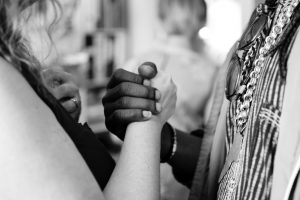 The New York Times recently took a crack at explaining the latest permutation of diversity training in this story: Why Some Companies Are Saying ‘Diversity and Belonging’ Instead of ‘Diversity and Inclusion.’
The New York Times recently took a crack at explaining the latest permutation of diversity training in this story: Why Some Companies Are Saying ‘Diversity and Belonging’ Instead of ‘Diversity and Inclusion.’
Reporter Jennifer Miller describes a new generation of diversity consultants who are selling “belonging” and “bridge building” to corporate clients. Miller writes: “They are coming to the aid of executives who fear that national divisions are penetrating the workplace, threatening to drive a wedge between colleagues and making everyone feel anxious and defensive.”
Critics contend that they “can see that corporations want to have a structured conversation around how allowing all of us to thrive will help us all collectively,” but worry that “belonging” gives cover to people who would rather maintain the status quo. “There’s still a large percentage of people who have a zero sum mind-set. If I support you, I am going to lose.”
Info to Get Patients Back on Well-Baby Track Post COVID
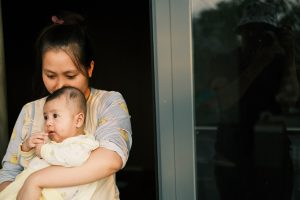 Did your patients postpone well-child visits and immunizations during three years of worry about COVID-19? Here are reminders in Hmong, Spanish and Somali that explain why they should get back on track. This Minnesota Council of Health Plans website explains which immunizations are critical for children at various ages, and shows how to get up-to-date records of which specific shots a patient’s child needs.
Did your patients postpone well-child visits and immunizations during three years of worry about COVID-19? Here are reminders in Hmong, Spanish and Somali that explain why they should get back on track. This Minnesota Council of Health Plans website explains which immunizations are critical for children at various ages, and shows how to get up-to-date records of which specific shots a patient’s child needs.
Why Money, Education Offer Scant Protection for Black Moms
 A recent Tip of the Week reported on research showing that more money and more education generally protects women from bad birth outcomes — except if you’re Black. Compared to the richest white mothers, the richest Black mothers and their babies are twice as likely to die from childbirth.
A recent Tip of the Week reported on research showing that more money and more education generally protects women from bad birth outcomes — except if you’re Black. Compared to the richest white mothers, the richest Black mothers and their babies are twice as likely to die from childbirth.
Here’s a follow-up story in the New York Times, Unwanted Epidurals, Untreated Pain: Black Women Tell Their Birth Stories, that offers a personal version of negative experiences that Black moms suffered while navigating the healthcare system.
How does the trouble start? “Long before women become pregnant,” researchers told the Times. “It happens across health care settings, with research showing that even if medical staff is empathetic overall, just one such interaction can have a big effect. It continues through childbirth, when discrimination, unconscious or not, affects Black mothers’ hospital care.
“These long-term issues of disparities in maternal outcomes can’t be boiled down to class,” said Tyan Parker Dominguez, who studies race and birth outcomes at the University of Southern California School of Social Work. “Racism doesn’t operate along economic lines, because even when you control for that, it’s still a factor.”
Get Help with Crisis Communication
 Communicating health risks in an emergency to immigrant, refugee and migrant communities can be tricky. Get help via this best practices webinar, set for Tuesday, May 9, noon – 1:30 p.m., offered by the Minnesota Department of Health and the National Resource Center for Refugees Immigrants and Migrants.
Communicating health risks in an emergency to immigrant, refugee and migrant communities can be tricky. Get help via this best practices webinar, set for Tuesday, May 9, noon – 1:30 p.m., offered by the Minnesota Department of Health and the National Resource Center for Refugees Immigrants and Migrants.
The goal is to sharpen the abilities of public health workers to communicate crucial information during a crisis. “The webinar,” organizers say, “will provide a cultural lens in risk communication with RIM communities.” Speakers include Sahan Journal founder Mukhtar M. Ibrahim, plus Doug Schultz and Michael Schommer from the Minnesota Department of Health.

